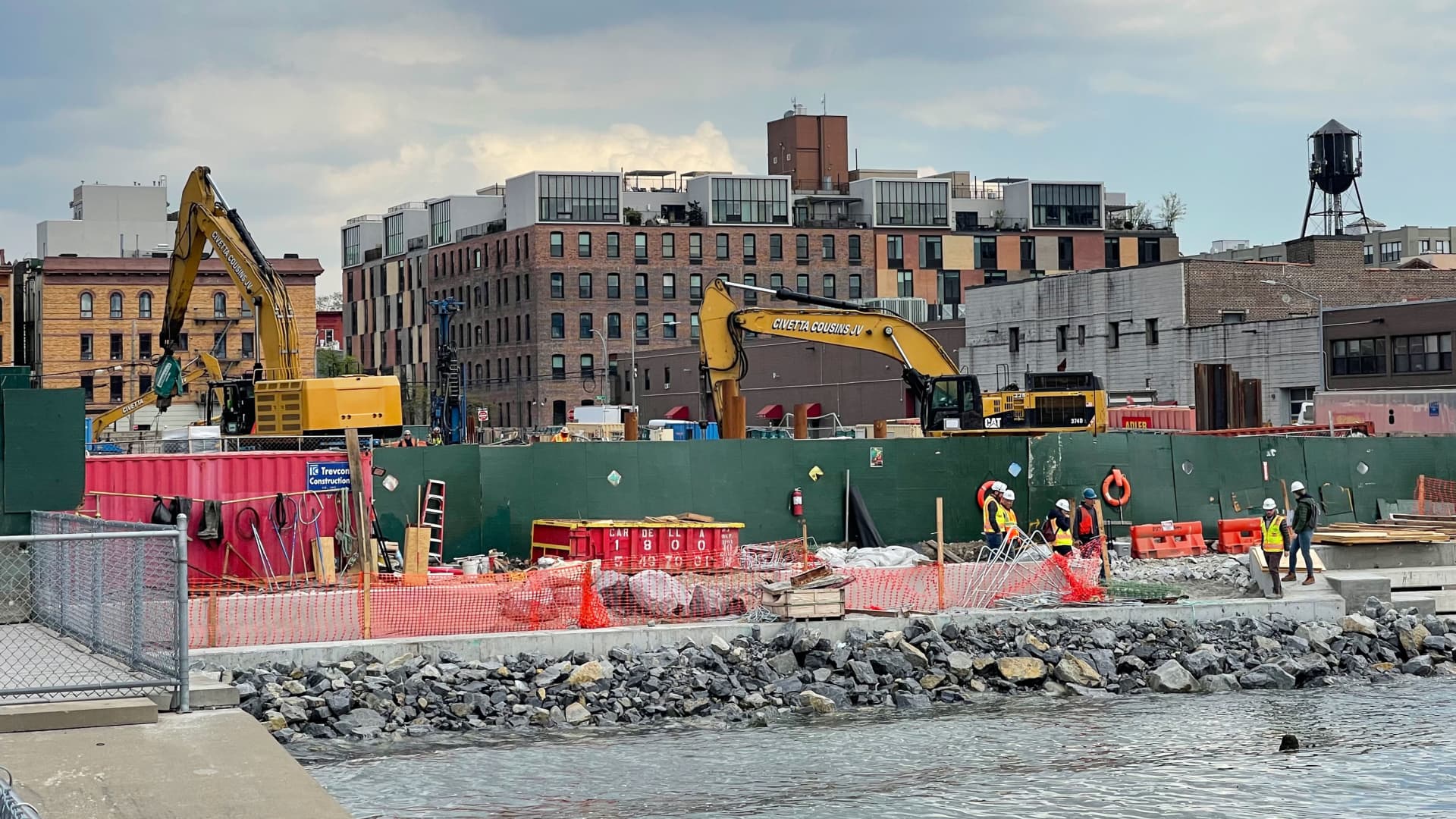Products You May Like
On the edge of the East River in Brooklyn, the cranes haven’t arrived at the construction site yet. Instead, massive drills are scattered across the full city block, drilling 320 boreholes nearly 500 feet into the ground. When construction is completed in 2025, the site will house the largest residential apartment complex in the U.S. to be heated by geothermal energy.
Geothermal heating and cooling has been around for a while, but is generally used just on single houses or small buildings. Often, the geothermal system is not at the same location as the building. But Lendlease, an Australia-based developer, is now trying geothermal on a massive scale in Brooklyn in a test that could end up being a blueprint for net zero living.
“We will be using it for everything from a swimming pool that will be heated through geothermal. We will be using it for all the domestic hot water in the building and also for heating and cooling, which will be heat pumps in every apartment,” explained Scott Walsh, director of development for Lendlease.
Here’s how it works: Water below the frost line is at a constant temperature. By drilling down to it and creating a loop system of pipes, the water is brought up through heat exchanges, which can heat or cool the building all year long.
”It’s approximately 55 degrees once you get below the frost line, and we are using that constant to cool in the summer and to be warmer in the winter,” explained Walsh. “Akin to your heart and the arteries and the veins in your body.”
The project at 1 Java Street will have 834 rental units across 5 buildings, including a 37-story and a 20-story tower. Using geothermal will reduce its greenhouse gas emissions by an estimated 53%, but it will cost about 6% more to build. Over a 20-year span, Walsh said, Lendlease will more than make that back.
”So as a long-term owner of an apartment building, we view this as in addition to its sustainability a financially sustainable practice,” he added.
This kind of innovation is rapidly becoming necessary because New York has new emissions sustainability standards for large buildings going into effect next year that require emissions reductions of 40% by 2030 and 80% by 2050. Retrofitting older buildings to comply will be incredibly costly. This complex will be entirely net zero when it opens.
